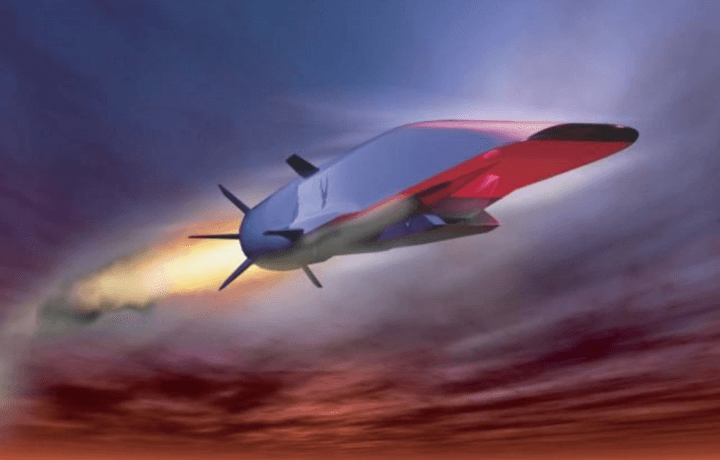The U.S. military will have to follow the old adage “If at first you don’t succeed, try and try again.” The proverb, which is credited to American educator Thomas H. Palmer, also adds, “Persistence pays off in the end.” In the case of the efforts to develop a hypersonic weapon it may take a bit more than persistence, however.
Last month, the United States Air Force conducted a second test of its prototype AGM-183A Air-launched Rapid Response Weapon (ARRW). The weapon separated safely from the B-52H Stratofortress bomber, but the rocket motor did not ignite.
It was the second unsuccessful attempted flight test of the hypersonic missile. In the previous failed flight test in April, the missile didn’t even leave the wing of the B-52H, to which it was attached. That had been the eighth test of the still-in-development ARRW using the Cold War era bomber.
“The Air Force conducted its second AGM-183A Air-launched Rapid Response Weapon booster flight test July 28. While it did not meet all flight objectives, the test demonstrated several first-time events as the program continues to track toward fielding a hypersonic capability in the early 2020s,” announced the Air Force Life Cycle Management Center’s Armament Directorate via a statement.
Arms Race to Develop Hypersonic Weapons
Even as the recent tests have ended in failure, the United States military will continue to press ahead with hypersonic weapons development. China and Russia are also developing similar weapons, with Russia apparently leaps and bounds ahead of the United States as it has announced this year that its Tsirkon – also known as the 3M22 Zircon – could be deployed on warships and even submarines by year’s end.
Russian Federation President Vladimir Putin has praised his nation’s efforts, and first noted the development of the weapons in his state of the nation address to the Russian parliament in 2018.
Currently, the United States Department of Defense (DoD) is working on multiple hypersonic programs. According to a Government Accountability Office (GAO) report from March, the United States has invested upwards of $14 billion on hypersonic weapons and related technologies through some 70 identified efforts.
Despite the recent failure, the U.S. Air Force has already announced that its ARRW team will continue to progress through the rapid prototyping effort.
“Developing first-of-its-kind missiles is difficult business and this why we test,” said Brig. Gen. Heath Collins, the Air Force program executive officer for weapons. “This is a critical capability for our Air Force and we have the very best team working to figure out what happened, fix it and move out to deliver ARRW to our warfighters as quickly as possible.”
New Hypersonic Ground Test Center
Even as the Air Force presses on, other efforts are continuing as well. This week, Purdue University announced that the first-of-its-kind facility to test hypersonic technologies was being constructed at the Purdue Aerospace District adjacent to the Purdue University campus in West Lafayette, IN. The center is already noted to be a hotbed for hypersonic research and aerospace technology development.
The new Hypersonic Ground Test Center (HGTC) will be a shared facility that supports multiple test cells as well as laboratories. The news of the HGTC follows the university’s and research foundation’s announcement to build a new 65,000-square-foot Hypersonic Applied Research Facility, which will house the only Mach 8 quiet wind tunnel in the world. In addition, the facility will be home to a hypersonic pulse (HYPULSE) shock tunnel.
Rolls-Royce has also announced that it will significantly expand its footprint at the midwestern university. Those facilities will be used to develop high-altitude and hybrid-electric engines to power the next generation of U.S. military aircraft.
“At Purdue, we’re committed to research at the very frontiers of science, especially when it can contribute to the national security of Americans,” said Purdue President Mitch Daniels. “Becoming home to the nation’s premier hypersonics facilities can make such a contribution, while providing enormous new opportunities for our researchers, aspiring entrepreneurs, and job seeking graduates.”
The HGTC facility will be home to a pair of separate testing streams, where partners can conduct tests in the 3.5-5.0 Mach range as well as the 4.5-7.5 Mach range. The center will allow multiple companies to undertake work simultaneously on site, while also being ensured of full protection of intellectual property (IP) and other sensitive work. The facilities at the HGTC will be available for long-term lease to allow guaranteed and timely access for contractors to conduct their tests at their preferred schedule and duration.




